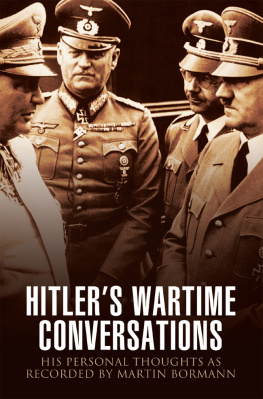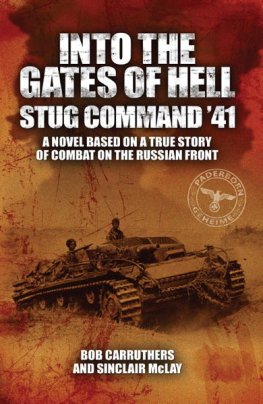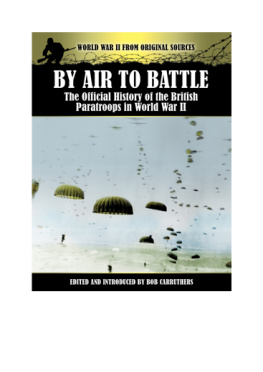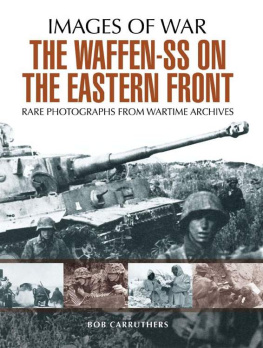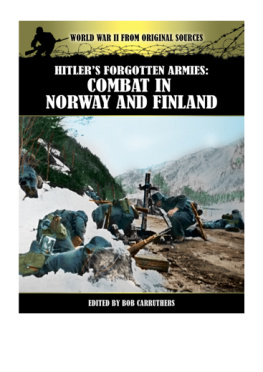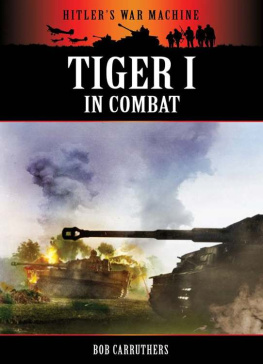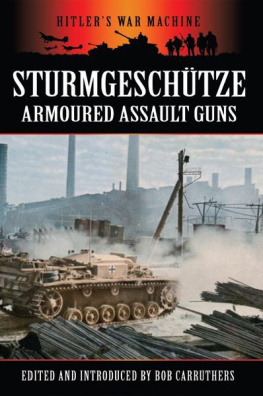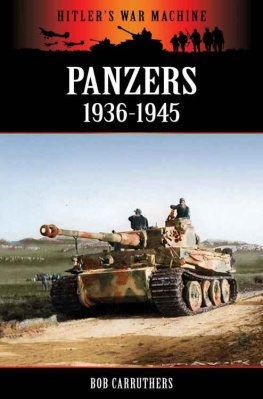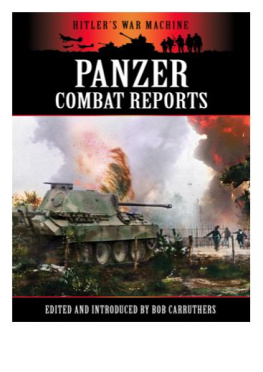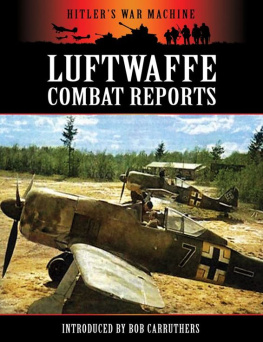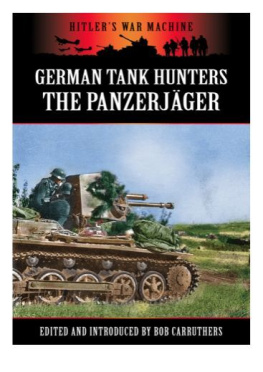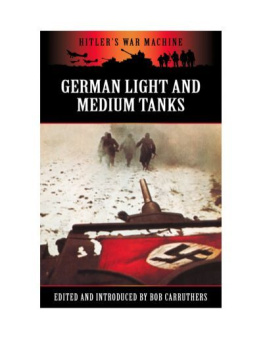This book forms part of the series entitled Hitlers War Machine. The aim is to provide the reader with a varied range of materials drawn from original writings covering the strategic, operational and tactical aspects of Hitlers army. The concept behind the series is to provide the well-read and knowledgeable reader with an interesting compilation of related primary sources which together build a picture of a particular aspect of World War II.
I am pleased to report that the series has been well received and it is a pleasure to be able to bring original primary sources to the attention of an interested readership. I particularly enjoy discovering new primary sources, and I am pleased to be able to present them unadorned and unvarnished to a sophisticated audience. The sources speak for themselves and the readership I strive to serve is the increasingly well informed community of reader/historians which needs no editorial lead and can draw its own conclusions. I am well aware that our community is constantly striving to discover new nuggets of information, and I trust that with this volume I have managed to stimulate fresh enthusiasm and that some of these articles will provoke readers to research further down these lines of investigation, and perhaps cause established views to be challenged once more. I am aware at all times in compiling these materials that our relentless pursuit of more and better historical information is at the core our common passion. I trust that this selection will contribute to that search and will help all of us to better comprehend and understand the bewildering events of the last century.
This volume is comprised of information and documents on the vast array of German artillery pieces, and the men who operated them, from the difficulties of warfare in problematic terrain such as desert and forest, the tactics used by the men on the ground, to the facts and figures of the weapons themselves.
In order to produce an interesting compilation giving a flavour of events at the tactical level I have returned once more to the US Intelligence series of pamphlets, which contain an intriguing series of contemporary articles on weapons and tactics. I find this series of pamphlets particularly fascinating as they are written in the present tense and, as such, provide us with a sense of what was happening at the face of battle as events unfolded.
Thank you very much for buying this volume, I hope you find something new and interesting in these pages and I sincerely hope it earns its place in your library.
Edinburgh 2012.
Enemy Self-Propelled GunsA Summary of Known Equipment
Tactical and Technical Trends, No. 25, May 20, 1943.
a. General
Self-propelled guns represent one of the technical advances made in ordnance during this war. The following account, from British sources, of German, Italian, and Japanese equipment shows the considerable interest which this development has aroused. Several descriptions and sketches of these guns have already been published in earlier issues of Tactical and Technical Trends.
With reference to German self-propelled guns the following general points are worthy of note:
There are no known German self-propelled heavy antiaircraft guns;
With regard to antitank guns, while there have been many local improvisations, the present German tendency is to provide self-propelled mounts for the heavier antitank weapons only;
In every case standard guns and standard chassis, whether semi- or full-tracked, are used;
All self-propelled guns are provided with AP and HE ammunition, and can thus effectively engage both "soft" and armored targets.
b. German AA/AT Guns
(1) 20-mm AA AT Gun
Although primarily an antiaircraft gun, this piece can also be used against tanks. Mounted on a 1-ton half-track (see figure 1) with a gasoline engine, it usually tows a single-axle ammunition trailer. The armament is a long, thin-barreled, 20-mm, high-velocity gun. The weight in action is 4.5 tons; the length, 15 ft. 7 in., the width, 7 ft. 1 in. and the height, 6 ft. 7 in. On roads, the radius of action is about 137 miles; cross country, about 93. The crew is seven men.

There are two versions of the gun itself, namely the 20-mm Flak 30 and the 20-mm Flak 38. The gun, mounted in front, may or may not be shielded. It fires 20-mm, .260-pound, high-explosive shells at a high muzzle velocity of 2,950 f/s, the .327-pound AP shell at 2,625 f/s, and the .223-pound AP 40 shot at 3,270 f/s. The firing rate is 120 rpm. The horizontal range is 5,320 yards. The mount gives an all-around traverse and an elevation varying from minus 12 degrees to plus 90. At 400 yards, the AP shell will pierce .98 inch of homogenous armor at an impact angle of 30 degrees, and 1.50 inches at normal. At 400 yards' range, the AP 40 shot will pierce 1.46 inches at 30 degrees, and 1.69 inches at normal.
(2) 20-mm Four-Barreled AA/AT Gun
This is a Vierling (quadruple) gun on an 8-ton half-track (see Tactical and Technical Trends, No. 4, p. 4) 22 ft. 6 in. long by 7 ft. 11 in. wide and 10 ft. 10 in. high, weighing, ready for action, 11.5 tons. The gasoline engine develops 140 brake horse power, giving a radius of action on the road of 155 miles, and about 62 cross country. The crew is probably eight. The armament is "a quadruple 20-mm Flak 38, with an all-around traverse and an elevation stated as from "minus 10 to plus 100" (apparently 10 degrees past vertical--which seems odd, but may be useful when firing at planes passing directly overhead). The range, penetration, and ammunition are substantially the same as for the Flak 30 and 38 previously noted.
(3) 37-mm AA/AT Gun
While like the 20-mm primarily an antiaircraft gun, this 37-mm gun can be used for horizontal fire. It may be identified by the long, slender barrel with a conical muzzle brake (see figure 2), and it usually tows an ammunition trailer. The mount is a 5-ton, half-tracked vehicle, with a 130-HP gasoline motor giving a 156-mile radius on the road, and about 62 miles cross country (which seems rather small). The length and breadth are 20 ft. 7 in. by 7 ft. 6 in.; the height is 9 ft. 2 in. The crew is eight men.


